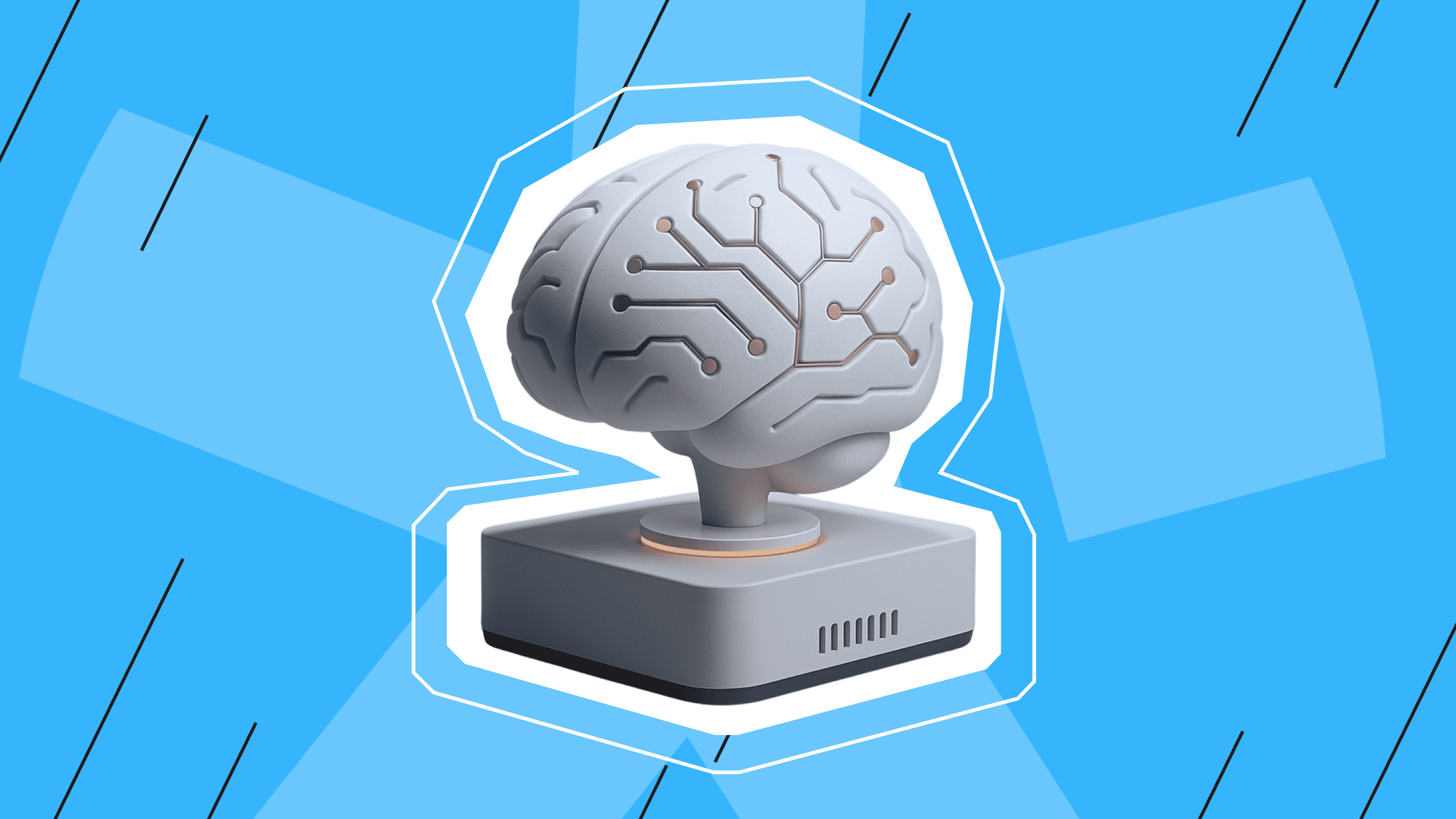
Humanity has always built tools lighten the load. In 2025, those tools listen, spot patterns we overlook, and teach themselves to do better next time. These self-upgrading systems live inside thousands of machine learning (ML) projects running in phones, warehouses, clinics, and even toys. And if someone asks why machine learning matters, the answer has moved far beyond research labs: it’s already shaping daily life.
In this article, you’ll find simple examples and seven real-world benefits of machine learning projects making an impact in 2025.
What Is Machine Learning in Simple Words?
Imagine a recipe that rewrites itself after every meal. Instead of a chef guessing the right amount of salt, the recipe watches your reaction, checks what’s left on the plate, and adjusts the next batch. That self-adjusting recipe captures the concept of machine learning. Data flows in, a rapid machine analysis uncovers patterns, and the software rewrites its own rules, known as machine learning models, so tomorrow’s results taste better.
Machine learning uses different methods to process data. For example, decision trees act like a series of branching questions to help find the right answer. Neural networks are complex models that work similarly to how our brain processes information. Other models group similar data together to better analyze it. All these methods help computers learn and make decisions on their own.
Programmers weave these algorithms into machine learning applications such as fraud detectors, language translators, and crop sensors. Beginners often start with simple machine learning projects — like sorting photos of cats and dogs on a low-cost VPS — before graduating to basic ML projects like forecasting electricity demand. Ambitious teams tackle advanced ML projects like robotic forklifts that navigate busy depots. But whether simple or advanced, each project is a recipe that keeps improving itself.
Community also plays a vital role in that progress. GitHub alone hosts thousands of open-source machine learning projects that anyone can copy, fork, and remix into fresh projects. Still, no amount of success lessens the persistent issues with machine learning — bias, privacy concerns, and brittle data pipelines.
Top 7 Key Benefits of Machine Learning Projects in 2025

What makes 2025 special? Cheap chips crunch trillion-operation math on phone batteries. No-code builders let hobbyists experiment. Cloud giants hand out starter kits. Global datasets dwarf anything from five years ago. The result is a flood of real-world machine learning benefits. Below are seven you may already be enjoying, even if you never noticed.
Making Life Easier Through Automation
Automation once meant hulking factory arms swinging sparks over conveyor belts. Now it’s quiet software helpers tapping virtual buttons on your behalf and vanishing before you notice.
How Apps and Tools Do the Work for You
Hidden inside everyday apps are nimble machine learning projects trained to finish dull chores: transcribing voice notes, straightening scans, resizing photos, tagging receipts, and even renaming downloaded files so they’re easy to sort. You tap once, and the model performs thirty clicks in the background.
Because a self-learning loop keeps retraining on fresh examples, the tiny fix you make today becomes tomorrow’s built-in skill. That snowballing gain is one of the stickiest benefits of machine learning projects.
Examples: Smart Assistants, Email Filters, and More
Voice assistants set alarms while you tie your shoes. Email filters trash 99% of junk without custom rules. Smart thermostats preheat your home before sunrise. Even micro-tasks – like auto-filling two-factor codes or centering crooked snapshots – rely on separate machine learning projects. Each one trims friction.
When someone asks about the benefits of machine learning projects for daily life, “giving back stolen minutes” often tops the list.
Small but mighty automations you may already use include:
- Calendar apps that suggest meeting titles from chat text.
- Ride-share maps that pre-fill your home address at night.
- Photo galleries that resurface last year’s vacation on the exact anniversary.
- Note apps that extract action items from messy bullet lists.
- Browsers that predictively preload the next article as you scroll to the bottom.
International infrastructure you can count on
Only locations and hardware we trust — no buzzwords, just facts.
Smarter Decisions With Less Guesswork
Data used to drown managers; now it guides them.
How ML Helps Businesses and People Choose Better
Here is a snapshot of fields already leaning on decision-focused machine learning projects:
- Agriculture. Predicting optimal irrigation days based on soil sensors and satellite heat maps.
- Finance. Adjusting credit limits in real time by scoring thousands of micro-signals per swipe.
- Energy. Routing surplus solar power to neighbourhood batteries before clouds roll in.
- Sports. Swapping players mid-game based on fatigue forecasts and pace patterns.
- Human Resources. Flagging skill gaps and recommending training paths months ahead of reviews.
More Real-World Examples
Why does your cart suggest spare batteries right after you buy a camera? An ML recommender model spotted that pattern across millions of orders. Streaming queues offer hidden gems that match your late-night mood. Travel sites reroute you away from future storms thanks to hyper-local weather models. Each service showcases concrete benefits of machine learning: fewer regrets, more delights, and decisions baked in evidence rather than gut feel.
Personalized Experiences Just For You

Screens no longer look the same for everyone in 2025 — and that’s intentional. Personalization has become one of the most visible machine learning benefits because it meets people where they are instead of forcing everyone through the same digital doorway.
Why Your Netflix Looks Different Than Your Friend’s
Two friends open the same app; thumbnails differ, trailers autoplay in a different order, and even subtle color accents shift. A personalization engine – yet another family of machine learning projects – studies watch habits, search failures, swipe pace, subtitle use, and pause spots to design a storefront just for you.
Under the hood, several machine learning models work in tandem: a recommender ranks titles, a visual-layout model arranges artwork, and a pacing model decides whether to start the trailer instantly or wait a beat.
Together, they create that hand-tailored feeling – one of the stickiest advantages of machine learning – and they do it for 260 million viewers without human editors.
Behind-the-scenes, a personalization model may track:
- The time of day you hit “Play.”
- Whether you binge or savor a series.
- The ratio of finishes to early exits.
- Your tendency to skip intros or watch credits.
- The device type — phone, TV, or projector.
ML in Music, Ads, and Even Online Classes
Playlists now blend comfort tracks with new bands with to match your gym session, road trip, or rainy afternoon. Some fitness apps even adjust the tempo mid-run — a tiny yet magical benefit of machine learning projects.
Ad promos no longer lump you into broad demographics. Instead, they track shifting interests to reduce cognitive noise and improve relevance. Dynamic-pricing engines inside machine learning projects even tweak coupon values so loyal shoppers still feel rewarded without over-discounting products.
Online courses adapt everything from reading pace to background color for eye-strain relief. More striking are smart-quiz systems. A Dutch publisher working with aNewSpring tested an adaptive module that skipped questions learners had clearly mastered. The result: one-third less study time with no drop in scores. Healthcare programs using Oxford Medical Simulation’s virtual reality drills report a 22% reduction in faculty and student time compared to manikin sessions, with the same clinical competence.
Backup storage that holds up
When things break, backups matter. Ours are built to survive bad days, not just look good on paper.
Saving Time and Money
Efficiency used to mean bigger machinery; now it means smarter code that trims seconds, kilowatts, and dollars at scale.
How Companies Use ML For Efficiency
Factories deploy vision-driven machine learning projects on GPU-powered dedicated servers that spot hairline defects before parts leave the line, shrinking warranty claims. Energy grids stream sensor data into anomaly detectors that flag leaks hours before manual checks. Airlines feed weather, crew logs, and gate data into schedule-repair models that shave millions of dollars from delay fees. Accounting teams offload line-item extraction to document readers with near-perfect accuracy. Call centers route tickets by sentiment so experts tackle the hardest problems first.
Here are five common cost-cutting machine learning applications:
- Dynamic staffing models match cash-register hours to real-time footfall.
- Predictive maintenance replaces elevator cables before a breakdown.
- Smart HVAC controllers learn building thermal inertia and cut peak demand.
- Fleet-routing engines bunch deliveries to burn fewer liters of diesel.
- Cloud cost optimizers hibernate idle servers overnight.
Each rollout slashes waste, fattens margins, and underlines the hard-dollar benefits of machine learning projects that the finance team applauds.
Everyday Impact: Faster Deliveries, Cheaper Products
Those enterprise gains ripple outward. Packages that once took four days now arrive in two. Trucks burn less fuel thanks to adaptive routing. Escalators stay running because vibration models schedule service before bearings fail.
A national grocer provides another example: by combining weather data, local sports schedules, and social media chatter into demand-forecast models, it managed to reduce produce waste per store by about 25–30% — a result similar to findings from retailers like Tesco and Afresh (an AI-powered application that helps grocery stores more accurately forecast demand for fresh product). One peer-reviewed study found Afresh-powered stores cut average waste by 14.8% and lowered emissions.
Shoppers are already reaping rewards in the form of fresher berries and vegetables. AI systems such as Afresh cut average shrink by roughly a quarter and add about two extra days of shelf life — a clear benefit of machine learning projects for both taste buds and wallets. Savings on spoilage also give retailers room to run promotions, though there are no public figures yet showing systematic price reductions.
Keeping You Safe Online and Offline

Security only wins when it learns faster than the attackers trying to break it.
How ML Detects Fraud and Protects Data
Banks run real-time machine learning projects that cross-check card swipes with a phone’s last GPS ping, instandly flagging impossible travel. Social networks pipe billions of messages through natural language processing streams to spot phishing lures or hate speech in seconds.
Cloud-storage platforms compute “fuzzy hashes” and quarantine ransomware uploads before the first file encrypts. Powered by self-updating ML algorithms, these defenses retrain hourly, adapting far quicker than any frozen rule set—a life-saving benefit of machine learning projects in a world of shape-shifting threats.
Recent numbers prove the impact. Stripe’s Radar system introduced a three-layer stolen-card model in 2025 that’s already blocked 30 million high-risk transactions. Meanwhile, Roku’s credential-stuffing ordeal pushed the company to enable mandatory two-factor authentication after 591,000 customer accounts were targeted — slashing repeat incidents. Both cases highlight how fast-learning code can shut doors before criminals walk through them.
Smart Security Systems and Online Safety
Here’s how machine learning projects could hypothetically help keep streets and communities safer:
- Home cameras distinguish pets from prowlers, cutting down on 3 a.m. false alarms.
- City lights brighten on empty blocks when predictive models detect elevated risk.
- Stadium gates monitor crowd flow and redirect foot traffic to prevent crush points.
- Industrial sensors flag pressure spikes that precede pipeline leaks, averting disasters hours in advance.
Every deployment must still navigate challenges with machine learning – from privacy limits to bias in face recognition – so responsible teams embed red-team audits, diverse training sets, and rollback switches.
A Real-World Snapshot
During a 2024 spike in card-testing fraud, Stripe’s adaptive model spotted the new click rhythm and throttled authorizations within seconds, preventing a wave of chargebacks. Old threshold rules would have taken minutes, which would be far too slow.
That rapid response came from a single advanced machine learning project tuned by just four engineers, underscoring how small expert teams paired with data-hungry models can safeguard millions of dollars. The lesson is clear: smarter code and continuous learning convert invisible optimizations into everyday safety — a growing chapter in the story of the benefits of machine learning projects.
Helping in Health and Wellness

From step counters to genomic insights, healthcare is now saturated with self-learning code — and the everyday benefits of AI and machine learning finally reach patients, caregivers, and weekend joggers alike.
From Step Counters to Early Disease Detection
Wearables track heart-rate variability, skin temperature, and breathing patterns to whisper warnings days before fever spikes.
Dermatology apps snap a mole, compare it to thousands of labeled images, and flag trouble in seconds. Smart hearing aids adjust microphone focus as you turn your head, while dental scanners spot cavities hidden between teeth.
Hospitals deploy imaging machine learning projects to outline hairline fractures a busy radiologist might overlook. In neonatal wards, tiny cameras feed data to comfort-score models that alert nurses before a newborn’s vitals drift.
Together, these breakthroughs underscore how the benefits of machine learning projects – once locked away in research labs – have become everyday guardians of health.
ML in Fitness Apps and Hospitals
Gym apps rewrite tomorrow’s workout based on today’s heart-rate zones. Nutrition trackers gauge portion sizes from plate photos — a once-clunky ML basic projects concept now polished. Mental-health chatbots employ natural language processing to deliver on-demand cognitive behavioral therapy tips at 2 a.m., while meditation apps modulate background sound to match your breathing rhythm.
In the operating room, real-time recommendation engines could suggest stitch tension to junior surgeons, while hospital supply chains could forecast glove demand days in advance to prevent shortages. At the population level, predictive dashboards can pinpoint neighborhoods at high risk for diabetes, helping clinics schedule food-education workshops sooner.
These examples show how human-centered machine learning applications extend life, reduce anxiety, and free clinicians for tasks only humans can handle. These are clear, compassionate machine learning benefits that grow with every new model retraining cycle.
Constantly Learning and Improving
Models never graduate; they study forever.
Every live system streams new data into an update loop. That cycle might run once a week for a smart heater or thousands of times per second inside a self-balancing drone, yet the principle is identical: machine learning projects sharpen themselves long after launch. Community forums and model hubs circulate fresh weight files, bug fixes, and test results at lightning speed, allowing practitioners to borrow yesterday’s breakthroughs for tomorrow morning’s release.
Continuous learning drives progress, but it also exposes new pitfalls that classic software never faced:
- Version drift. Tiny parameter tweaks break downstream tools expecting old outputs.
- Concept drift. The real world shifts (e.g., slang, fraud tactics, sensor wear), and yesterday’s labels lose meaning.
- Reproducibility gaps. Stochastic training seeds and opaque data slices make it hard to recreate results on demand.
- Data poisoning. Attackers slip malicious examples into public datasets, nudging models toward bad decisions.
- Bias revival. Even after debiasing, fresh data can reintroduce unfair patterns against protected groups.
- Adversarial security. Crafty inputs fool vision or language models, forcing constant hardening cycles.
- Resource cost. Frequent retraining burns energy and cloud credits, demanding smarter scheduling and pruning.
Teams counter these hurdles with canary deployments, shadow testing, automated fairness audits, and tight data hygiene. The payoff is worth the vigilance — each incremental win feeds the next upgrade, creating systems that learn faster and serve users better with every iteration.
Dedicated server
Dedicated hosting for those who need more power, flexibility, and real stability.
Making the World Better, Too
Beyond personal convenience lies planet-wide impact. Climate researchers use machine learning projects to forecast hurricanes more accurately and optimize offshore wind farms. Conservationists deploy audio models to detect endangered birds in rainforest recordings. Non-Governmental Organizations feed satellite images into crop-health predictors to flag famine hot spots early. Municipal planners analyze air-quality sensor streams to schedule street cleaning and reduce asthma attacks.
Disaster-response teams now fuse weather, traffic, and social-media streams to generate dynamic evacuation routes, demonstrating double-digit improvements in drill simulations during recent typhoon seasons. Multiply that by thousands of overlapping efforts, and the mosaic appears — data-driven kindness at a global scale.
We must admit trade-offs: poorly vetted models can reinforce bias or invade privacy. That’s why reputable teams publish audits, run stakeholder workshops, and sandbox models before rollout. Healthy skepticism paired with open evaluation turns potential pitfalls into solvable engineering tasks.
Conclusion
So, what are the benefits of machine learning for ordinary people in 2025? The short answer: less drudgery, sharper decisions, custom-fit services, lower bills, stronger security, healthier bodies, and tools that improve while you sleep. Each perk flows from a swarm of machine learning projects — from dorm-built simple machine learning projects predicting laundry cycles to globe-spanning logistics engines fine-tuned by expert hands.
When a colleague or cousin asks again about the benefits of machine learning projects, point to the seven sections above and the proof already in their pocket, browser, or smartwatch. Thanks to recipes that rewrite themselves, 2025 feels a bit like gentle science fiction: personalized, proactive, and empowering — yet very much here and now.
Dedicated Server with GPU
Power for ML, rendering, and compute-heavy tasks — no sharing, no bottlenecks.
From $105.00/mo

